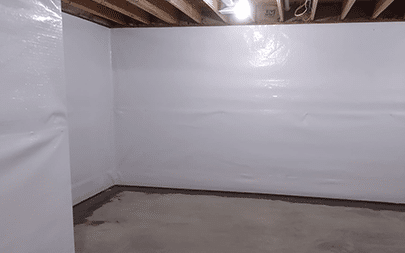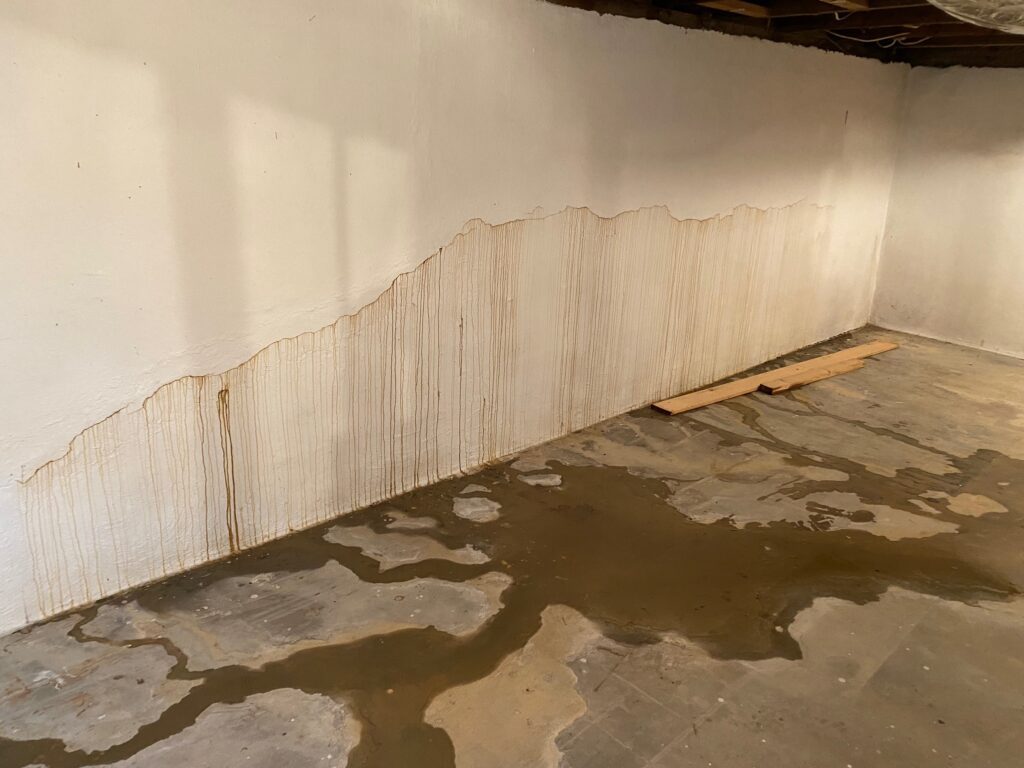The Only Guide for Basement Waterproofing Ames
The Only Guide for Basement Waterproofing Ames
Blog Article
The Greatest Guide To Basement Waterproofing Ames
Table of ContentsNot known Facts About Basement Waterproofing AmesThe Best Strategy To Use For Basement Waterproofing AmesThe Best Strategy To Use For Basement Waterproofing AmesAn Unbiased View of Basement Waterproofing AmesBasement Waterproofing Ames for DummiesThe Greatest Guide To Basement Waterproofing Ames
Regularly check your basement for indications of moisture, such as moist places, mold, or stuffy odors. Make sure that gutters and downspouts are clean and operating correctly. Examine for foundation fractures and fix them as needed. Different periods existing different difficulties. In springtime, melting snow and enhanced rains can bring about water accumulation.In winter, freezing temperatures can create structure fractures to broaden. While some jobs can be taken on by homeowners, it's commonly best to consult an expert for complicated concerns. Specialists have the experience to identify and deal with origin properly. Hiring a specialist offers many advantages: Professionals have the proficiency to recognize the source of dampness troubles and offer efficient remedies.
With a lot details around, it's difficult to understand who to trust - basement waterproofing ames. When you've got a cellar waterproofing or mold concern, you intend to obtain the best answers, fix the problem, and relocate on with the things in your life that actually matter. Our resource center supplies genuine solution to some of one of the most usual inquiries and experiences homeowners experience when taking into consideration cellar waterproofing

The smart Trick of Basement Waterproofing Ames That Nobody is Discussing
by Nick Gromicko, CMIBasements are normally the area of a structure most at threat for water damages since they are located listed below quality and surrounded by soil. Soil releases water it has soaked up during rainfall or when snow thaws, and the water can finish up in the cellar via leaks or fractures.
Examiners can likewise gain from being aware of these fundamental approaches for preventing leakages and floodings. Preventing water from entering the cellar by guaranteeing it is diverted far from the structure is of main problem. Poor roof drainage and surface overflow because of rain gutter issues and improper site grading may be the most common sources of damp cellars.
Below are some actions to draw away water far from the structure: Mount and keep seamless gutters and downspouts to make sure that they course all rain and snow thaw much sufficient far from the foundation of the building to guarantee that pooling does not occur near the walls of the structure. At least 10 feet from the building is best, and at the factor where water leaves the downspout, it needs to have the ability to move openly away from the structure rather of back towards it, and must not be gathering in swimming pools.
Reduced places that may bring about water merging should be levelled to avoid the possibility of standing water near the structure. Superficial ditches called swales need to be utilized in conditions where one or more sides of the structure my latest blog post deal with an site web upward slope (basement waterproofing ames). A swale should slope away from the building for 10 to 15 feet, at which factor it can empty right into another swale that routes water around to the downhill-side of the structure, leading it away from the structure
An Unbiased View of Basement Waterproofing Ames
The fractures or openings could be the result of numerous things. Poor craftsmanship throughout the original develop may be making itself obvious in the form of fractures or openings. Water stress from the outside may be constructing up, forcing water with wall surfaces. The residence might have worked out, causing fractures in the flooring or wall surfaces.
Here are some steps to take if you think that water is getting in the basement via fractures or holes: Identify locations where water might be getting in through cracks or holes by inspecting for wetness, dripping or staining. Every square inch of the cellar need to be examined, particularly in situations where leaking or flooding has not been evident, however dampness build-up is conveniently noticeable.
This is a waterproof formula that can assist ensure that wetness and water do not pass through basement walls. It works primarily for extremely tiny cracks and holes. Any kind of cracks larger than around 1/8-inch need to be filled with mortar made from one part concrete and 2 parts great sand, with simply adequate water to make a fairly rigid mortar.
Not known Facts About Basement Waterproofing Ames
Utilizing a damaging carve and hammer or a cool chisel, cut a dovetail groove along the mouth of each split to be filled up, and after that use the mortar completely. published here The dovetail groove, once loaded, ought to be strong enough to withstand the force of pressure that was pushing water through the crack.
Here are some steps and tips for its application: Unique treatment needs to be taken when using salt silicate. It is an alkaline compound and, therefore, can shed skin and eyes if it comes into contact with them. Inhalation can additionally create irritability to the respiratory system system. Sodium silicate should be applied just to bare concrete, cinder block or stonework that has been cleaned thoroughly and is devoid of any dust, oil, adhesives, paint and oil.
Salt silicate ought to not be over-applied or it will not be entirely taken in by the substrate, leaving a white deposit. Paint can after that be applied without worry of water vapor obtaining entraped in between the paint and the wall, which can ultimately cause blistering and peeling off. Adhesives for ceramic tile or flooring can also be utilized much more effectively, once the substratum has been secured.
The Definitive Guide to Basement Waterproofing Ames
Owning a home is a considerable financial investment, both financially and emotionally.
Discover the basics, benefits, and the step-by-step overview to ensure that your home stands high and strong for generations ahead. Cellar waterproofing is an important yet commonly forgotten facet of home upkeep. To understand why cellar waterproofing is essential, it is very important to understand the fundamental concepts. Cellars are the foundation of your home, located listed below ground degree.
This can lead to a moist, moldy basement, create splits in the wall surfaces or, in severe situations, result in flooding. Waterproofing, by definition, is making something untouched by water and resistant to it, which's precisely what basement waterproofing intends to achieve. The essence of this procedure is to develop a barrier to fight the moisture that your cellar wall surfaces come in call with, hence protecting against any kind of damage to the structure and interior of your house.
Indicators on Basement Waterproofing Ames You Need To Know

Report this page